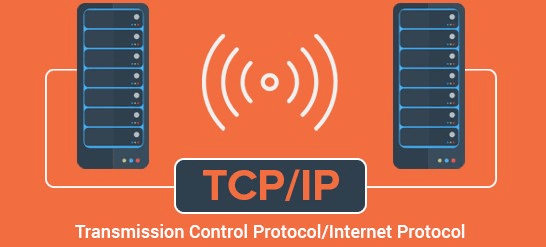TCP/IP: Transmission Control Protocol/Internet Protocol
TCP/IP stands for Transmission Control Protocol/Internet Protocol. It is a set of protocols or rules and procedures that governs communications among computers on the internet. Although the entire internet protocol suite is commonly known as TCP/IP, it is one of the core protocols of the Internet Protocol Suite. It was developed in 1978 and driven by Vint Cerf and Bob Kahn.

TCP/IP is a commonly used standard for transmitting data over networks. In simple words, it is the suite of communication protocols which connect network devices on the internet or used to interconnect network devices on the internet. It decides how the data will be exchanged over the internet through end-to-end communications that include how the data should be arranged into packets (bundles of information), addressed, sent, and received at the destination. This communication protocol can also be used to interconnect network devices in a private network such an intranet or an extranet.
How TCP/IP works?
As the name suggests, TCP/IP comprises two basic protocols: TCP (transmission control protocol) and IP (Internet protocol).
TCP: The TCP allows applications to create channels of communications across a network. It also allows a message to be divided into smaller packets before they are transmitted over the internet and then assembled in the right manner at the destination address. So, it ensures the reliable transmission of data across the network. Furthermore, it also checks errors in the packets and requests for re-transmission if errors are found.
IP: The IP address tells the packets the address and route so that they reach the right destination. It has a method that enables gateway computers on the internet-connected network forward the message after checking the IPS address. It is like a line of workers passing coal from a mine to a mining cart.TCP/IP model layers:
TCP/IP, which is a standard layered protocol suite comprises a set of rules and procedures, is divided into four layers, on the basis of their functionality. Each layer has a specific protocol.
- The application layer: This layer includes all the protocols required to communicate directly with the end-users. Some important protocols in this layer include HTTP (Hypertext Transfer Protocol), FTP (File Transfer Protocol), SMTP (Simple Mail Transfer Protocol), and the DHCP (Dynamic Host Configuration Protocol).
- The transport layer: This layer ensures the transmission of the correct message or data in proper order. It utilizes UDP (User Datagram Protocol) and TCP.
- The network access layer: It offers the functionalities to build and handle packets of information.
- The internet layer: It performs two basic functions, routing and addressing by using IP (Internet Protocol). It tells how the packets are to be sent to the destination.

Comments
Post a Comment